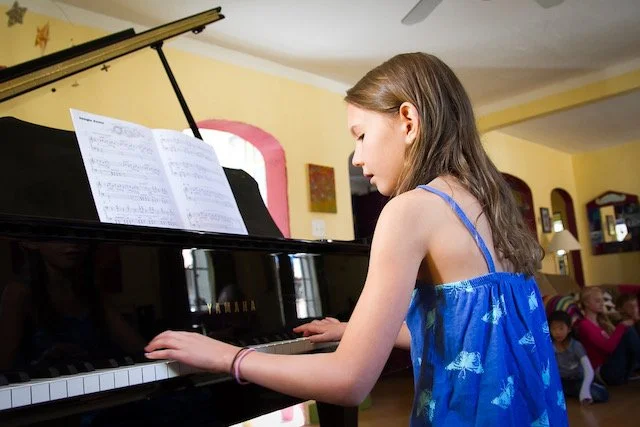Sun Salutations
One day last summer, during one of those hour-long yoga flow classes, I realized that we had come to the end of the class and I had no real idea what I had done for the last hour. I was not dead, so obviously I had made it through the poses without mishap or injury, which was a good thing. Nevertheless, I knew that the literal ability to “go through the motions” was not an admirable skill in a yoga practice. Or in life, for that matter. What it simply meant was that I had become a master at not paying attention.
Thinking about it, I had to admit that my yoga practice at home was no better. I did some yoga every day, yes, but I had fallen into rut of a certain sequence of poses, for no real reason other than I could remember them without much effort. Clearly, I was in need of something new.
And so last fall I signed up for an Ashtanga yoga workshop that took place every Monday night for six weeks. Almost from the first minute, I loved the Ashtanga practice. I loved the clarity and discipline, the fact that it demanded a specific focus and attention: Look here, Breathe now, Inhale, Exhale. I loved the sequencing: Five rounds of Sun Salutations A, Five rounds of Sun Salutation B, a Standing Sequence, a Sitting Sequence, a Finishing Sequence. Done.
Of course, it isn’t really that simple. Like any good practice, there are layers upon layers of depth and richness to mine. But even on its most superficial level, I loved the basic structure of the Ashtanga practice, the map of poses, the foundation on which I could begin my work on the yoga mat: Do this, now this, and then this.
Truth be told, left to my own devices at home, I don’t always do the prescribed Ashtanga sequence. Sometimes I do only three rounds of Sun Salutation B (Five rounds is a lot, I’m here to say.). Sometimes only the Standing Sequence. Don’t tell.
But knowing the Ashtanga series has made my home yoga practice inspiring again and given me new direction and focus. With ten random minutes at my deposal in the middle of the day, I can work through part of a sequence. At 5:30AM when I am barely conscious, I can glide through five rounds of Sun Salutation A before I head to the pool. Instead of aimlessly thinking, “Yeah, I guess I should do some yoga,” and then doing nothing, I have a place to start, a map to follow: Do this, now this, and then this. Ironically, with a bit of structure guiding me, my yoga practice has become deeper and more creative.
It occurs to me that this is exactly the same in teaching piano technique: start with a basic blueprint of 5-Finger Positions, scales and arpeggios, and chord progressions and spiral out from there. These exercises are the yoga sun salutations of piano playing, designed to help us yoke together our minds, bodies and spirits. Yoking the body and spirit is the easy part I find, the mind, not so much.
Like any sun salutation, there are endless variations of even the most basic piano exercises. Endless. Depending upon the day and the hour, this is either inspiring or intimidating, both on the piano bench and on the yoga mat. And so just as I count on my Ashtanga sequencing chart to direct my yoga practice, in the middle of my teaching afternoons, when my energy is flagging and my inspiration is gone, I rely heavily on my lists of technique variations. With a list of variations at my side, it is quite easy to be spontaneous and resourceful, if not downright creative: Charlie’s left hand staccatos are sloppy and inaccurate. What about only playing staccato 5-Finger Positions with left hand this week? He’ll think playing only left hand is a gift…Chloe’s command of the notes in minor 5-Finger Positions is suspect. Maybe this time only minor 5-Finger Positions, legato and quiet with her eyes closed so she has to listen well. We’ll call them “spooky” positions…
Here are my most basic variations for major or minor Five-Finger Positions, the five rounds of Sun Salutation A for piano technique, the starting place for any creative technique work at the piano. (These, of course, work equally well for major or minor scales and arpeggios, but maybe those would be more like Sun Salutation B? Or the Standing Sequence?)
Using the rationalization that novelty does encourage attention (because it, in fact, does), I try to give a new twist on a previous assignment in every lesson. Unless the variation is specifically about dynamics, I encourage a healthy, robust mezzo-forte as the default dynamic. These can be played Right Hand, Left Hand or Both Hands, as appropriate.
Legato
Staccato
Forte
Piano
Mix and Match or combine any of the above: Staccato and Forte. Legato and Piano. Go up Forte and down Piano. Go up Staccato and down Legato…
The options are endless, I tell you. Endless.
